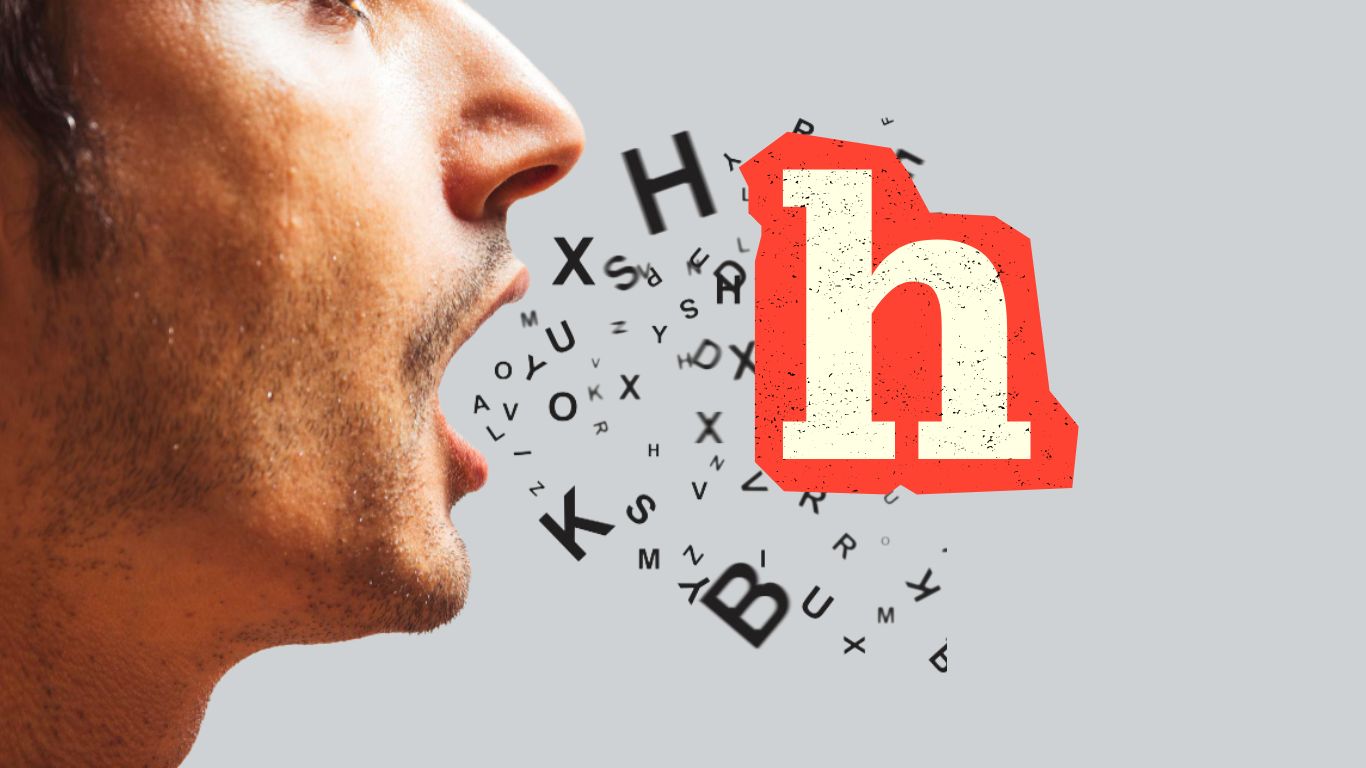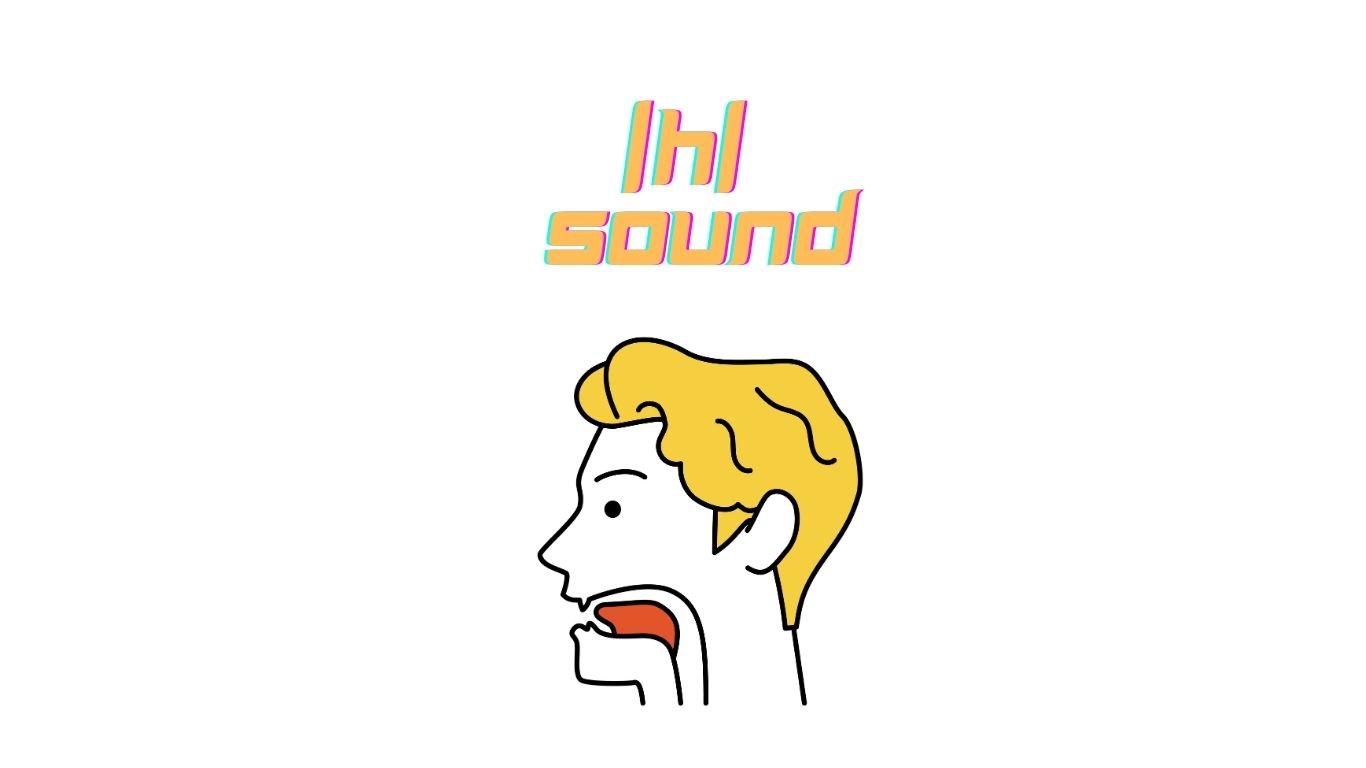
Hey there! I’m Emma, your American Accent Coach—and today we’re focusing on a sound that seems easy at first glance, but actually hides some tricky secrets: the American /h/ sound, like in hello, help, or behind.
A lot of learners think, “Oh, /h/ is simple—it’s just a breath, right?” And yes, you’re partly right—it really is just a flow of air. But here’s the twist: that simplicity is exactly what makes it complicated. Unlike most other consonants, /h/ doesn’t have a clear “mouth shape” of its own. Instead, it borrows the shape of the vowel that comes after it. That means your /h/ in he looks and feels different from your /h/ in hot or who.
And to make things even more interesting, English spelling with the letter H can be totally unpredictable. Sometimes you pronounce it (happy, house), sometimes it’s silent (honest, hour), and sometimes it teams up with another letter to create a completely different sound (ch, th, sh, ph).
Here’s the kicker: in natural, fast American English, we don’t even always pronounce /h/—especially in small, common words like him, her, his, or have. Knowing when to drop /h/ is just as important as knowing when to pronounce it!
So in this guide, we’ll break down everything you need to know about the American /h/ sound:
✅ How it’s actually made in your throat (not your mouth!)
✅ Why /h/ is sometimes called a “voiceless vowel”
✅ The messy spelling rules (silent h, digraphs, French influence)
✅ How /h/ behaves in real conversations—and why it often disappears
✅ Practice tips, drills, and exercises to make your /h/ sound smooth and natural
By the end, you’ll understand why this “simple puff of air” is actually a big deal in English—and you’ll know exactly how to master it for clear, confident speech.

The American H sound is one of the most unusual consonants in English because it doesn’t really have its own mouth position. Instead, it’s all about the breath from your throat and the shape of the vowel that follows. Think of it less like a “strong consonant” and more like the whispered beginning of a vowel.
Here’s how to do it step by step:
Unlike other consonants (like /p/ or /t/), your lips and tongue don’t have to make any special contact for /h/. Keep your mouth neutral and relaxed.
Example: Get ready to say “ahhh” (like at the doctor). That relaxed position is your starting point.
The /h/ sound is voiceless. That means your vocal cords don’t vibrate when you make it—it’s just airflow.
Deep in your throat, your vocal folds come slightly closer together so the air passes through with a soft, whispery friction. Don’t push hard—this isn’t a strong scrape, it’s more like a gentle sigh.
Here’s the most important part: /h/ doesn’t have a shape of its own—it copies the vowel after it. Your lips and tongue should already be moving into position for the vowel.
Think of it like this: you’re not saying “/h/ + vowel,” you’re just whispering the start of the vowel.
If you blow too hard, it sounds harsh and unnatural. If you don’t use enough breath, it disappears completely. The goal is a soft puff of air, like fogging up a mirror.
Try it: Hold your hand in front of your mouth and say hi, how, help. You should feel a gentle, warm airflow each time.
Quick Tip
If you’re struggling, whisper the vowel first. For example:
This trick works because /h/ is basically just a voiceless version of the vowel.
✅ By mastering these steps, you’ll avoid two of the most common learner mistakes:
Here’s a fun fact: many phoneticians argue that /h/ isn’t really a “normal consonant” at all. Instead, it’s often described as a voiceless version of the vowel that follows it.
What does that mean? Let’s break it down.
Try this exercise:
So hit can be thought of as [ɪ̥ɪt]—a whispered vowel turning into a voiced vowel.
When students try too hard to make /h/ into a “big consonant,” they often:
❌ Push too much air and make a rough, throaty noise.
❌ Use the tongue and produce a harsh /x/ sound (like Spanish José or Russian хорошо).
But if you think of /h/ as “the whispered start of a vowel,” everything gets easier. It naturally matches the next sound and blends smoothly into speech.
See how the /h/ is just the vowel without voice? That’s why /h/ can sound a little different depending on which vowel follows—it’s a chameleon sound!
So next time you practice /h/, don’t think “hard consonant.” Think soft whisper into the vowel. That mindset shift alone fixes a lot of pronunciation issues.

Just like many English sounds, /h/ doesn’t always stay exactly the same. Depending on where it shows up in a word, it can take on slightly different forms (called allophones). These variations don’t change the meaning of words—but they do change how natural your speech sounds.
This is the basic, breathy version of the sound—what you hear in words like:
Think of it as the default /h/.
When /h/ comes between two voiced sounds (usually vowels), it often picks up a little voicing. That means your vocal cords start to vibrate lightly, giving it a softer, “breathy” quality.
Examples:
Important note: Even if you pronounce it as plain [h], people will understand you. But if you add that little voicing, your English will sound smoother and more connected.
When /h/ comes right before the “y” sound /j/, as in the cluster /hj/, many Americans don’t really pronounce two separate sounds. Instead, they merge into a single sound: the voiceless palatal fricative [ç].
Examples:
This [ç] sound is similar to the German “ich” or the Spanish “hijo.”
In some American dialects (especially in the Mid-Atlantic or NYC area), the /h/ in words like human or huge may disappear altogether. So:
This feature is called yod-dropping. While it’s not standard “General American” pronunciation, you’ll definitely hear it regionally.
✨ Learning these variations isn’t about memorizing rules—it’s about recognizing that your /h/ can sound slightly different in context. And that’s a good thing! It means you’re sounding more native-like.
Every language has rules about where sounds are allowed to appear in words. These rules are called phonotactics. The /h/ sound is one of the most restricted consonants in American English—it simply doesn’t get as much freedom as other sounds.
Here’s what you need to know
In American English, /h/ can only appear at the start of a syllable.
So unlike /s/ or /t/, you’ll never hear /h/ closing a syllable.
Many consonants love to combine with others at the start of words (like /st/ in stop or /pl/ in play). But /h/ is shy—it usually stands alone.
Phonetically, /h/ is a weak consonant. It doesn’t have a strong mouth position—it’s basically just breath. Over time, English dropped it from weaker spots (like syllable endings) and kept it only in the strongest, safest position: the beginning of a syllable.
So instead of thinking of these rules as “random,” remember this: English protected /h/ by limiting it.
Quick Recap
If you’ve ever been confused about when the letter h is pronounced and when it’s silent, you’re not alone. English spelling is full of surprises, and h is one of the biggest culprits. Sometimes it’s spoken as expected, sometimes it vanishes, and sometimes it teams up with another letter to make a completely different sound. Let’s break it down.
Most of the time, especially in words of Germanic origin (the “native” English stock), the letter h represents the /h/ sound we’ve been practicing.
✅ Examples: hat, home, happy, history, heart
These are the straightforward cases—you see an h, you pronounce it.
Here’s where it gets tricky. After the Norman Conquest, English borrowed thousands of words from French. In many of these, the written h stayed—but the sound disappeared. That’s why we now have a handful of super common words where the h is completely silent.
❌ Examples:
These words must simply be memorized. If you pronounce the h, it sounds foreign or unnatural.
Interestingly, some borrowed French words used to have a silent h, but over time, English speakers “restored” the sound because of spelling. Today, in American English, we clearly pronounce the h in words like:
✅ hotel, historic, human, humble, horrible
✨ Pro tip: You may still see the older usage in phrases like “an historic occasion.” That “an” is a leftover from when the h was silent.
So if you want to sound American, drop the /h/ in herb.
Sometimes, h doesn’t stand for /h/ at all—it works with another letter to make a new sound.
✨ Notice that in all these cases, the h isn’t pronounced as /h/ at all.
Quick Recap
If you’ve ever listened to native speakers and thought, “Wait—where did the /h/ go?”… you’re absolutely right. In casual, fast American English, the /h/ sound often drops out completely in certain words.
But don’t worry—this isn’t sloppy or lazy speech. It’s a normal, rule-based process that actually makes English sound smooth and connected.
/h/ disappears most often in small, grammatical words (what we call function words) when they are unstressed in a sentence.
Here are the most common ones:
Examples:
When /h/ disappears, the word begins with a vowel—and that vowel often links right onto the word before it. This makes speech flow faster and smoother.
Examples:
✨ If you keep pronouncing every /h/ in these little words, your speech will sound stiff or overly careful. Learning to drop /h/ in the right spots is a huge step toward natural rhythm.
In General American English, dropping /h/ only happens in these small function words. But in some regional dialects (like certain British accents, or older New York speech), speakers may also drop /h/ in content words:
✨ That’s not part of standard American English, though—so if your goal is a neutral American accent, keep the /h/ in words like happy, house, history.
Quick Recap
✅ Drop /h/ in unstressed words like he, him, his, her, have, has, had.
✅ Keep /h/ when the word is stressed or at the very start of a sentence.
✅ In General American, never drop /h/ in content words like happy, house.
Understanding how /h/ works is one thing. But to really make it part of your fluent speech, you need repetition, feedback, and smart drills. Let’s go step by step.
Before words, let’s train your airflow.
Goal: Gentle air, not a harsh “blast.”
Since /h/ is really just a “whispered vowel,” practice like this:
Examples:
This instantly creates a natural /h/.
Minimal pairs help your ear notice when /h/ makes a difference.
Record yourself. Do you clearly hear the difference?
Practice common words with /h/ in different positions.
Now let’s put /h/ into natural rhythm.
Start slow and clear, then speed up to match native rhythm.
Different learners struggle in different ways. Here are some quick fixes:
Even though /h/ looks simple, learners from many language backgrounds struggle with it in surprisingly consistent ways. Here are the biggest trouble spots I hear as a coach—and the fixes that actually work.
❌ Mistake: Saying a strong, scraping [x] sound instead of the soft [h].
✅ Fix: Think of /h/ as a gentle sigh. No tongue, no scraping—just a soft breath. Practice by whispering vowels first (see the Whispered Vowel Technique).
❌ Mistake: Saying “’appy” instead of happy, or “’istory” instead of history.
✅ Fix: Remember—in American English, /h/ is always pronounced in content words. Use minimal pairs like:
Record yourself and check if you can really hear the difference.
❌ Mistake: Pronouncing every single /h/ carefully in sentences like:
✅ Fix: Learn to drop /h/ in small words when they’re unstressed:
This makes your speech sound smooth and natural, like a native speaker.
❌ Mistake: Blowing too much air, making /h/ sound like a heavy gasp.
✅ Fix: Keep it light. Imagine you’re fogging up a small mirror—enough air to mist it, but not enough to blow it over.
❌ Mistake: Inserting an /h/ before vowels where it shouldn’t be.
✅ Fix: Slow down and check your spelling. Only pronounce /h/ when the word really starts with h in English spelling and it’s not one of the silent-h words (honest, hour, heir).
So… is the American /h/ sound really just a puff of air? Yes—and no. On the surface, it’s one of the simplest sounds in English. But once you look closer, you see why learners struggle with it:
The good news? Once you understand these patterns, /h/ becomes much less mysterious. Instead of treating it like a tricky exception, you start to see it as a flexible, chameleon-like sound that adapts to the rhythm of American English.
Here’s the big takeaway:
✨ With practice, you’ll stop second-guessing when to say /h/ and when to leave it out. It will simply become part of how you speak—clear, confident, and natural.
So grab a mirror, practice those whispered vowels, and don’t be afraid to experiment. Before long, you’ll find that what seemed like “just a puff of air” is actually one of the keys to fluent, authentic American English.